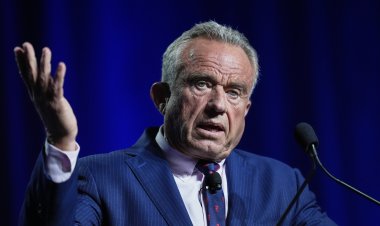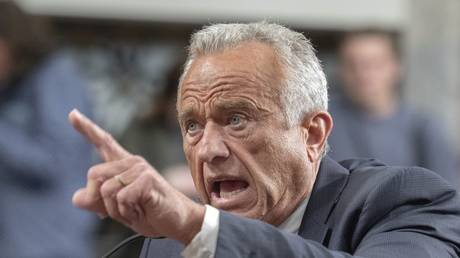Enhancing Trust in China's Gradual Policy Measures
The Chinese economy has reached a pivotal moment. Recent discussions surrounding the "comprehensive package of incremental policies" have led to a range of interpretations, many of which are superficial and misleading. It is essential to address these misunderstandings and help all stakeholders gain a clear understanding of the foundational principles guiding China's economic initiatives.

The Chinese economy currently stands at a pivotal crossroads, with varied interpretations of the recent "comprehensive package of incremental policies" often being superficial and misleading.
It is essential to address these misconceptions and guide stakeholders in accurately understanding the principles guiding China's economic initiatives.
### Systematic Macro-Level Policies
Firstly, the "comprehensive package of incremental policies" constitutes a systematic macro-level strategy.
After a meeting of the State Council on September 29, the National Development and Reform Commission held a press conference on October 8 to clarify the core tenets discussed. The comprehensive plan that emerged was fine-tuned during the National Day holiday, in accordance with the meeting's guiding principles, to respond to current economic conditions.
This framework is a response to directives from the Political Bureau of the Communist Party of China Central Committee on September 26. It presents a wide-ranging policy landscape addressing the prevailing economic environment, rather than simply functioning as a guide for isolated departmental operations. The combined approaches in five key areas are interconnected.
The overarching objective is counter-cyclical macroeconomic regulation, emphasizing the need to expand effective domestic demand, bolster support for enterprises, stabilize the real estate market to mitigate risks, and uplift the capital market to manage expectations. Initial direction may be set by some policies, followed by more detailed actions from relevant departments.
Consequently, interpreting the press conference solely from a technical policy lens risks a significant misunderstanding of its implications.
### Beyond Fiscal and Monetary Policies
Secondly, comprehensive macroeconomic regulation transcends mere fiscal and monetary policies.
China operates within a "1+2+6" framework for macroeconomic governance, which prioritizes national development planning, employs fiscal and monetary policies as primary tools, and coordinates policies related to employment, industry, investment, consumption, environmental protection, and regional development.
Following the announcement of financial sector policies, there is a pressing need to accelerate initiatives across other domains. Observers of macroeconomic regulation often focus on analyses from financial institutions, which have their own perspectives. Most analysts, however, lack direct experience with macroeconomic regulation, leading their insights to be narrowly focused on the financial sector.
Yet, the complexities of macro-level issues necessitate deeper scrutiny.
### Evaluating Policies Beyond Numbers
Thirdly, policy assessments should extend beyond mere numerical evaluations.
While some policies lend themselves to quantitative measurement, others do not. The expression "x trillion" may resonate strongly, but it is unrealistic to frame every press conference around such figures, as economic policy encompasses more than just numerical outcomes.
Some individuals exploit public preferences for impressive figures to inflate expectations, later claiming that results "fell short of expectations." This tactic, frequently employed by short-sellers, aims to manipulate markets through emotional volatility for profit.
It is crucial to identify and avoid falling for such strategies.
Nonetheless, policymakers must consider market sentiment and adopt a recipient-centric perspective when determining the magnitude, timing, and implementation of policies. Incremental policies are expected to yield new investments, and the "x trillion" target will likely materialize, even if some measures require navigating legal protocols. Patience and caution against misleading narratives are essential.
### Strategy Behind Policies
Fourthly, it is important to recognize the strategic intent behind policies.
Certain initiatives may directly mobilize substantial financial resources, while others, which may not involve direct investment, still hold significant value. The conference addressed topics such as "illegitimate cross-regional law enforcement" and "profit-driven law enforcement," highlighting key concerns for entrepreneurs.
The commitment to conduct "inspections when necessary" illustrates the central government's clear stance on these issues.
Looking ahead, we expect the swift introduction of laws to promote the private economy, which promises to have economic significance comparable to the projected "x trillion" figure.
The government also pays close attention to new urbanization, a critical issue that may be overlooked by market institutions. Although replicating the substantial growth stimulus of the past may be challenging in today's urbanization phase, the influx of new residents into various urban areas will ultimately provide strong support for the real estate market, investment, and consumption.
This represents a vital strategic move in the economic sector that has not received adequate professional analysis.
### More Upcoming Policies
Fifthly, additional incremental policies are anticipated.
The financial sector press conference on September 24 marked the commencement of this regulatory phase; the Politburo meeting on September 26 mobilized efforts on a broad scale; the State Council's executive meeting on September 29 outlined a systematic plan, and the National Development and Reform Commission’s October 8 conference introduced a comprehensive policy package.
When reviewing these events, it is imperative to see them as interconnected rather than standalone occurrences. This represents the initial phase and signals the central government's renewed focus on economic matters.
Subsequent policies will undoubtedly be rolled out by various government departments within their areas of responsibility, aimed at bolstering economic recovery and enhancement. Local governments will also work to translate central directives into actionable steps, maintaining an emphasis on fostering sustained economic recovery.
Concerns associated with local debts will be systematically addressed through robust measures over time, indicating that continued policy support is likely.
As we observe economic performance in the fourth quarter, the Central Economic Work Conference in December will define plans for the next year's economic strategies, which holds considerable anticipation.
It is noteworthy that the coming year will involve drafting the 15th Five-Year Plan.
A series of significant projects, initiatives, and policies will emerge aligning with China's medium- and long-term developmental needs.
The seamless integration of short-term initiatives with medium- and long-term planning characterizes the Chinese economy, with incremental policies arising from the 15th Five-Year Plan expected to significantly bolster the steady and positive progression of the Chinese economy moving forward.
In gauging economic performance, it is crucial to keep these pivotal timelines in mind for a thorough analysis of emerging trends.
Ian Smith for TROIB News
Find more stories on Business, Economy and Finance in TROIB business












